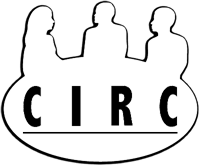For more information, contact any member of CIRC:
Dr. Nagaraj Neerchal
Director of CIRC and Contact for Statistics Projects
Dr. Matthias K. Gobbert
Associate Director of CIRC and Contact for Mathematics Projects
Dr. Elizabeth Stanwyck
Executive Director of CIRC

 |
presented by Rajesh R. Nandy, Associate Professor, Department of Biostatistics & Epidemiology, School of Public Health, UNT Health Science Center Friday, November 2, 2018. from 2PM -5PM at Biology(BIOL) 102 Click here for the Flyer |
|---|
Abstract
A primary objective of fMRI data analysis is to identify the active voxels in the brain while a task is being performed. A usual method to achieve this objective is to use a test statistic which is a function of the observed signal and declare a voxel as active depending on whether the observed value of the test statistic meets or exceeds a pre-determined threshold usually based on a family-wise error rate (FWER) or false discovery rate (FDR). This approach is well-established but suffers from a big weakness: a subjective choice of the pre-determined threshold to produce the activation map. Clearly the activation maps will look very different for varying choices of thresholds where larger activation blobs can be achieved by sacrificing specificity. In the proposed method, we no longer need to choose a threshold since it is optimally chosen from the data so that total misclassification rate of voxels classified as active or inactive is minimized. Appropriate methods are proposed for both single subject and group data..